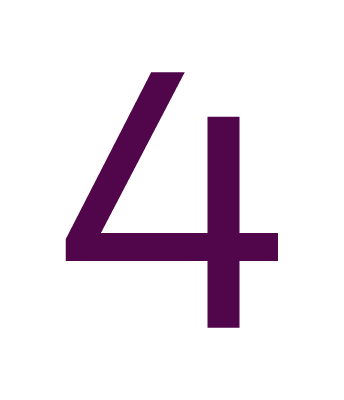DFA Community Toolkit
The DFA Community Toolkit is a research-informed resource that fosters adoption of dementia friendly practices. The toolkit supports communities in their Dementia Friendly efforts by providing straightforward, adaptable steps and standardized tools to help evaluate community efforts with trusted measures. The toolkit is organized into four phases to organize the effort. Within each phase, you will find detailed steps and accompanying resources for each step.

Convene key community leaders and members to understand dementia and its implications for your community. In this phase, you will:
1. Determine community readiness by convening with key community leaders, citizens, and people living with dementia to determine the community’s readiness to embark on a dementia friendly effort, assess what capacity the community has to evaluate the effort, and discuss sustainability to create a longer impact.
Use these helpful resources:
Dementia Friendly Community Overview – PowerPoint
Team Meeting Discussion Guide
Dementia-Friendly-Metrics
2. Build the case as to why there is a need within your community to become more dementia friendly through statistics and awareness materials.
Use these helpful resources:
Know the Ten Signs Checklist
3. Build an Action Team consisting of key collaborators and leaders, people living with dementia, their family and care partners and community members representing various community sectors.
While building an Action Team you will create a list of possible team members, meet with the team to introduce them to the effort, and orient them to resources, roles, and responsibilities. Additionally, you will coordinate and create team timelines, work plans, and continually update on community progress.
Use these helpful resources:
Call to Action Email or Letter Invitation Template
Interest in Dementia Sign-Up Sheet
Meeting Agenda and Minutes Template and Example
Budget Template
Community Coordinator Job Description
Action Team Roster
4. Engage the community more broadly by kicking off the effort in a community meeting or event.
Explain the initiative, its purpose, what the initiative can accomplish and begin to raise awareness and create energy within the community to further engage all community members and sectors!

Engage key leaders to assess current strengths and gaps in your community’s dementia friendliness. In this phase, you will:
1. Engage collaborators or the broader community in a dialogue to learn community strengths, gaps, and priorities for action which raises awareness of dementia.
In this process you will engage the community to discover what dementia friendly community actions are a high priority.
2. Identify ways in which the community can build on its assets and fill gaps to provide additional support.
To do this, develop a community assessment plan that will define the scope and approach of your effort. Next, an action team leader will train members who will conduct interviews and focus groups within the community. Interviews or focus groups can happen either in-person or virtually. The Action Team may also develop a resource packet with Dementia Friendly America information, sector guides, statistics and other educational or informational resources for participants in interviews or focus groups. Develop an organized process flow and timeline to establish a target end date for assessment and analysis. Once these steps have been completed, the Action Team can begin the community assessment.
Here are some tips when conducting a community assessment.
- Some interviewees prefer to complete the questionnaire prior to the interview meeting and will request an electronic copy. If the questionnaire was completed prior to the meeting, it should be collected along with additional comments prompted by the discussion.
- Expect people being interviewed to share personal stories. These stories lead to conversations that help identify the community’s strengths and gaps.
- While conducting the assessment, it’s critical to let the process play out rather than offer personal opinions that may compromise the results. The outcomes may or may not validate the interview team’s perceptions, but that is the value and fun in doing a community assessment.
- Enjoy the experience! This is an opportunity to learn, network, and really get to know community residents along with the services and resources available.
- Share the resource packet with participants and send a thank you note after the assessment to strengthen future connections.
Use these helpful resources:
Dementia Friendly America Overview
Master List of Interview Contacts
Pre-Interview Email
Community Call Script
Interviewee Thank You Letter
Guidelines for Conducting a Focus Group
Designing and Conducting Focus Group Interviews

Analyze your community needs and determine the issues collaborators are motivated to act on; then set community goals. In this phase, you will:
1. Compile and interpret the data you gathered in phase two.
The Community Engagement Tool outlines how to transfer responses from interviews and focus groups into the Full Engagement Worksheet and Key Element Matrices.
Use these helpful resources:
2. Using the compiled data, you will then draw conclusions and select priority goals that the community might consider undertaking.
In this step, you will determine community strengths and gaps/ opportunities to pursue, identify community activities to evaluate, summarize the community assessment results to present to the action team and select priority areas for community action, and lastly follow up with team members and thank them for conducting the surveys.
Use these helpful resources:

Act to create a community action plan that includes specific objectives, activities to meet the objectives, a designated lead person, a timeline, and an evaluation plan. Include strategies to seek funding as needed to support and sustain the plan. In this phase, you will:
1. Share the results and involve the community.
Plan and facilitate a community meeting to report the results of the assessment and brainstorm possible activities that could be accomplished in the priority goal areas.
2. Develop an action plan that prioritizes opportunities and community priority goals and seek necessary funding to support various aspects of the work.
- Create a community action plan using the Action Plan template that includes specific objectives, activities to meet the objectives, a designated lead person and a timeline.
- Evaluate impact by measuring common outcomes of dementia-friendly activities. The earlier you develop an evaluation plan, the greater the potential for reaping the evaluation benefits.
- Update the community on progress using all types of media. Include leaders and those who contributed to the assessment.
- Expand your team by inviting other key community members who have specific skills, knowledge, expertise or connections to help implement the action plan.
- Continue to use the community action plan as your guide to create a dementia friendly community and assess new opportunities that arise as activities are completed and objectives are met. Dementia friendly initiatives are ongoing and dynamic, so review the plan regularly and adjust as needed.
- Increase awareness of your dementia-friendly efforts by communicating the findings of your evaluation. Inform key collaborators of where change and impact are occurring. Create a communications plan that will describe the results to be shared, how they will be communicated and who they will be communicated to. Communicating your findings will inform the work of DFA communities across the country and motivate collaborators to invest time and resources in supporting the work.
Use these helpful resources:
Example of Action Plans: ACT on Alzheimer’s Community Booklet
To download all of the DFA Community Toolkit materials, please click the button below.
